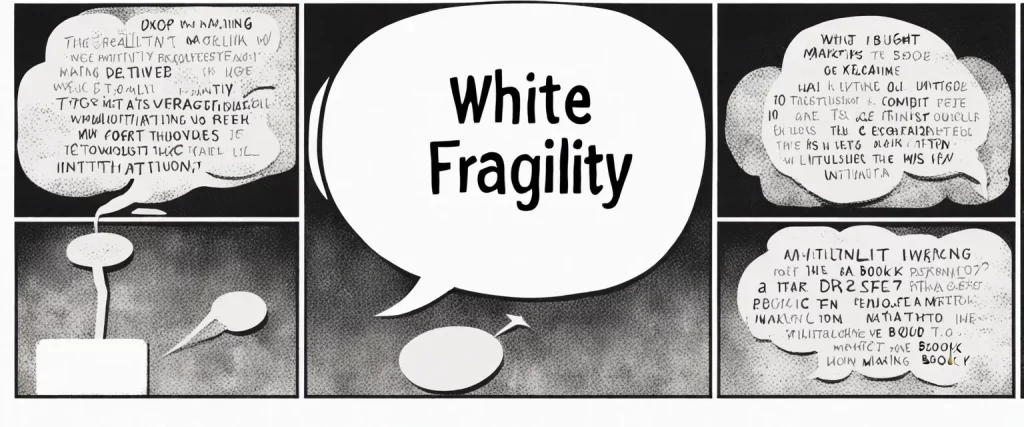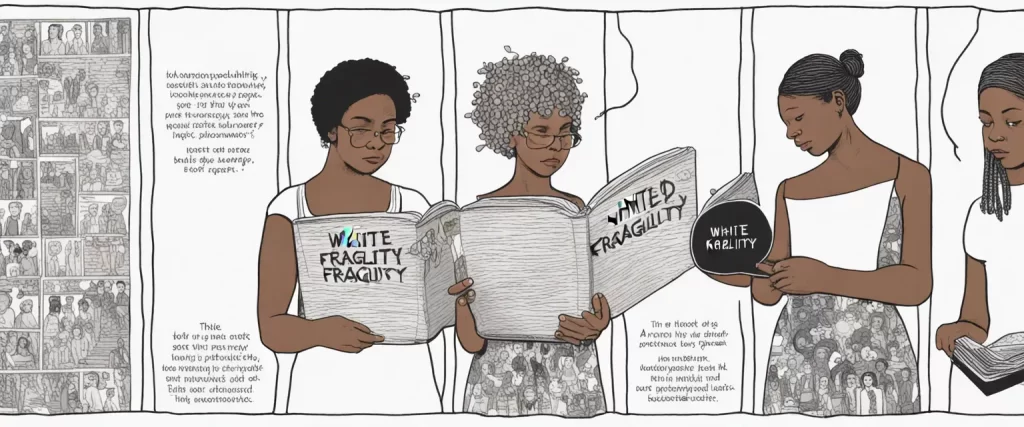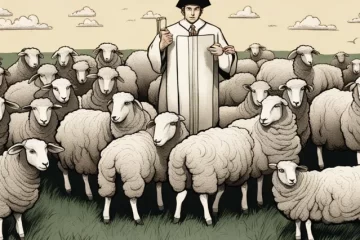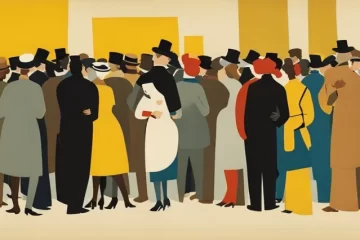Unpacking White Fragility: A Social Psychology Review of Robin DiAngelo’s Book

In today’s diverse and complex world, understanding the intricacies of social interactions has become more important than ever. Social Psychology, the fascinating discipline that delves into the dynamics of human behavior and thought processes, offers valuable insights into our attitudes, biases, and the mechanisms that maintain societal structures. Robin DiAngelo’s groundbreaking book, “White Fragility,” serves as a powerful catalyst to explore the concepts and challenges of social psychology in the context of race and racism. By examining DiAngelo’s thought-provoking analysis, we embark on a journey that encourages us to critically examine our own identities, better comprehend the intricacies of privilege and oppression, and ultimately foster meaningful dialogue and social change.
What is Social Psychology
Social psychology is a branch of psychology that explores how individuals’ thoughts, feelings, and behaviors are influenced by the presence of others and the social environment. It focuses on understanding how people’s beliefs, attitudes, and behaviors are shaped by social interactions, group dynamics, and societal norms. Social psychologists study a wide range of topics, including conformity, obedience, persuasion, prejudice, aggression, attraction, and group dynamics. They conduct experiments and use various research methods to examine social behavior and to gain insights into how individuals perceive, understand, and interact with others. The findings from social psychology research aim to contribute to a better understanding of human behavior and inform interventions to improve interpersonal relationships, promote positive social change, and address social issues.
Why is Social Psychology Important to Us
Social psychology is important to us for several reasons:
1. Understanding ourselves: Social psychology helps us understand our own thoughts, feelings, and behaviors in different social situations. It sheds light on why we conform to group norms, why we may act differently depending on who we are with, or why we may have biased judgments and stereotypes.
2. Understanding others: Social psychology helps us understand the thoughts, feelings, and behaviors of other people. It provides insights into how and why people form relationships, make decisions, influence each other, and perceive the world around them. This understanding can foster empathy, improve communication, and enhance our ability to relate to others.
3. Applying in real life: Social psychology findings can be applied to various real-life domains, such as education, workplace, marketing, and healthcare. For example, understanding how people are influenced by social norms can be used to promote positive behaviors like recycling or discouraging negative behaviors like bullying. It can also be used to improve teamwork and leadership skills in the workplace.
4. Challenging biases and stereotypes: Social psychology helps us recognize and challenge our own biases and stereotypes. It highlights how social groups may experience discrimination and prejudice, providing opportunities for social change and equality.
5. Promoting well-being: Social psychology research has contributed to our understanding of factors that promote happiness, well-being, and a sense of meaning in life. It also helps us understand the impacts of social support, relationships, and social connections on our psychological and physical health.
Overall, social psychology is important to us as it offers valuable insights into how we think, feel, and behave in social contexts, which can be applied to various areas of our personal and social lives to enhance understanding, communication, and well-being.
Unlocking Social Psychology from White Fragility

White Fragility Introduction
White Fragility” by Robin DiAngelo is a groundbreaking examination of the concept of white fragility and its impact on conversations about racism. DiAngelo, a sociologist and diversity trainer, argues that white people often have defensive reactions when discussing race and racism, and this defensiveness hinders discussions about systemic racial inequality.
The book explores how white fragility manifests itself in various ways, such as denial, tears, silence, and anger, when confronted with racism. DiAngelo explains that this defensiveness is rooted in the socialization of white individuals within a racially unequal society and the avoidance of racial discomfort. She highlights how this fragility reinforces racial power dynamics and perpetuates racism by preventing meaningful dialogue and change.
DiAngelo also delves into the cultural norms that contribute to white fragility, such as individualism, the myth of meritocracy, and colorblindness. She outlines how these ideologies prevent white individuals from recognizing their own biases and understanding the broader dynamics of racism. The author emphasizes that acknowledging and challenging one’s own fragility is crucial for personal growth and creating a more equitable society.
Moreover, the book explores the challenges of discussing race in predominantly white spaces and provides strategies for engaging in productive conversations about racism. DiAngelo encourages white people to actively listen, ask questions, and reflect on their own racial biases. She emphasizes the importance of lifelong learning and the need to embrace discomfort in order to dismantle systemic racism.
In essence, “White Fragility” offers a profound exploration of the barriers to engaging in honest discussions about racism and provides insights on how white individuals can become better allies in the fight against racial inequality.
Social Psychology Methods
In the book “White Fragility,” Robin DiAngelo discusses various social psychology methods that can help understand and analyze the concept of white fragility and its impact on race relations. Some of these methods include:
1. Implicit Bias: DiAngelo explores the concept of implicit biases, which are automatic associations and attitudes that people hold towards certain social groups, including their own racial group. Understanding and uncovering these biases is essential to understanding the roots and manifestations of white fragility.
2. Stereotyping and Prejudice: DiAngelo discusses how stereotypes and prejudices play a significant role in perpetuating white fragility. She explores how deeply ingrained stereotypes and preconceptions influence the way white individuals perceive and interact with people of color.
3. In-group and Out-group Dynamics: DiAngelo explores the social psychology of in-groups and out-groups, highlighting how white fragility is often triggered when confronted with challenging discussions about racism. Understanding these dynamics can shed light on why some individuals become defensive or resistant to engaging in conversations about racial inequality.
4. Cognitive Dissonance: Cognitive dissonance is another concept discussed in the book. It refers to the discomfort people experience when their beliefs or attitudes contradict their actions. DiAngelo argues that white fragility often emerges as a defense mechanism to reduce cognitive dissonance when white individuals are confronted with their own unconscious biases or participation in systems of oppression.
5. Dialogue and Intergroup Communication: DiAngelo explores the importance of dialogue and communication between different racial and ethnic groups. She suggests that engaging in difficult conversations and building cross-cultural relationships are crucial for overcoming white fragility and addressing racial inequality.
6. Socialization and Social Conditioning: DiAngelo discusses how society socializes individuals into racial norms and expectations, shaping their beliefs, attitudes, and behavior. Understanding how socialization and social conditioning contribute to white fragility is important in addressing and dismantling systemic racism.
These methods are utilized by DiAngelo to explain and analyze the concept of white fragility, providing insight into its psychological underpinnings and offering strategies for personal and societal transformation.
White Fragility Quotes
White Fragility quotes as follows:
1. “White fragility is a state in which even a minimum amount of racial stress becomes intolerable, triggering a range of defensive moves.”
2. “The antidote to white fragility is on-going and lifelong, and includes sustained engagement, humility, and education about the historical and social forces that shape our racial views.”
3. “Color-blindness is a form of racism that denies the experiences of people of color and disregards the systemic inequities they face.”
4. “Sustaining racism requires denial. White people must denounce racism actively and consistently.”
5. “Prejudice is a preconceived judgment or opinion, while racism is a system of advantage and disadvantage based on race.”
6. “White people often think of themselves as morally superior individuals who can only be racist if they hold personal animosity towards people of color.”
7. “Acknowledging white privilege is a necessary step towards dismantling racism, as it allows us to recognize the advantages we receive by virtue of our skin color.”
8. “White fragility functions to maintain the status quo and protects white dominance in society.”
9. “To address racism, white people need to engage in uncomfortable conversations and actively challenge their own biases and assumptions.”
10. “White solidarity and the refusal to speak up against racism perpetuate the problem by maintaining white privilege and avoiding uncomfortable dialogue.”

More Books About White Fragility by Robin DiAngelo
1. The Righteous Mind: Why Good People Are Divided by Politics and Religion” by Jonathan Haidt: In this thought-provoking book, Haidt explores the moral foundations that shape human behavior and political ideology. With a focus on understanding the differences between liberals and conservatives, Haidt provides valuable insights into the complexities of human nature and the psychological factors that contribute to our differing viewpoints.
2. The Social Animal: The Hidden Sources of Love, Character, and Achievement” by Elliot Aronson: Aronson dives deep into the intricacies of social influence, behavior, and the power of our unconscious mind. This book offers a comprehensive exploration of what drives human behavior, shedding light on topics such as conformity, cognitive dissonance, and the impact of our social environment. It challenges readers to reflect on how societal forces shape our thinking and behaviors.
3. “The Death of Expertise: The Campaign Against Established Knowledge and Why it Matters” by Thomas M. Nichols: Nichols critically examines the increasing disdain for experts and expertise in modern society. He delves into the consequences of this societal shift, highlighting the potential dangers of disregarding informed opinions in favor of personal biases or false information. This book serves as a cautionary tale, urging readers to embrace and respect expertise in order to make well-informed decisions.
4. Sapiens: A Brief History of Humankind” by Yuval Noah Harari: While it may seem unrelated at first glance, “Sapiens” provides a broader perspective on the development of human societies and the constructs that shape our beliefs and biases. Harari takes readers on a captivating journey through history, exploring how cultural, social, and psychological factors have influenced the human story. By understanding our past, we gain a deeper understanding of why certain ideas and beliefs persist today.
5. “Stamped from the Beginning: The Definitive History of Racist Ideas in America” by Ibram X. Kendi: For readers seeking a historical perspective on systemic racism, “Stamped from the Beginning” is a must-read. Kendi meticulously traces the origins, development, and perpetuation of racist ideas in America. By debunking common myths and exposing the root causes of racial discrimination, this book provides valuable context to understand the issues discussed in “White Fragility” and offers insights into the broader dynamics of racism in society.


0 Comments